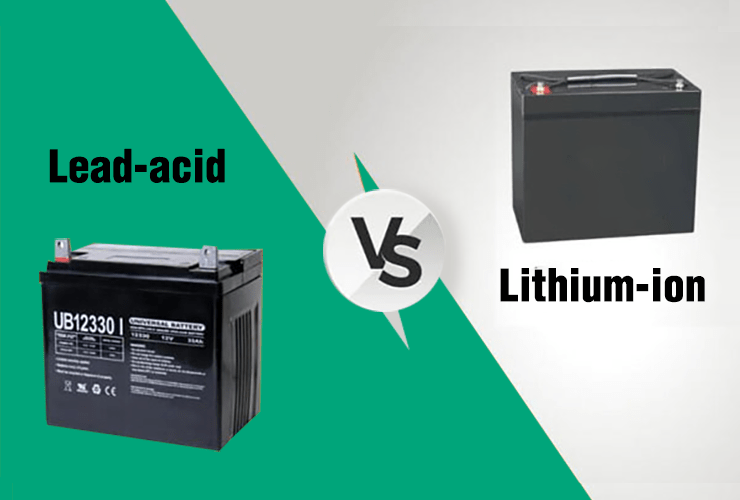Batteries are the heart of energy storage, especially in solar systems, inverters, and electric vehicles. In India, the two most commonly used types are Lithium-ion (Li-ion) batteries and Lead-acid batteries.
Cost:
• Lead-acid batteries are much cheaper upfront. A typical 150Ah lead-acid battery may cost ₹12,000–₹15,000.
• Lithium-ion batteries are costlier, with the same capacity costing ₹25,000–₹35,000.
Lifespan:
• Lead-acid: Lasts about 3–5 years with 300–500 charge cycles.
• Lithium-ion: Lasts about 8–12 years with 2,000–5,000 charge cycles.
Efficiency:
• Lead-acid batteries have 70–80% efficiency (more energy loss).
• Lithium-ion batteries have 90–95% efficiency (store and deliver more power).
👉 Lithium-ion ensures better performance and less wastage.
Maintenance:
• Lead-acid batteries need regular maintenance, like topping up distilled water and keeping terminals clean.
• Lithium-ion batteries are maintenance-free.
Size & Weight:
• Lead-acid batteries are heavier and bulkier.
• Lithium-ion batteries are lighter and compact, making them more suitable for homes and EVs.
Safety:
• Lead-acid: Risk of acid leakage, fumes, and corrosion.
• Lithium-ion: Safer, but requires a proper Battery Management System (BMS) to prevent overheating.
Applications:
• Lead-acid: Best for low-cost solar systems, inverter backup, and rural use where budget matters.
• Lithium-ion: Best for residential/commercial solar, EVs, portable devices, and long-term storage solutions.
Conclusion:
Choosing between Lithium-ion vs. Lead-acid battery depends on your needs:
• If you want a budget-friendly short-term solution, go for Lead-acid.
• If you want long life, higher efficiency, and zero maintenance, Lithium-ion is the smarter investment.




